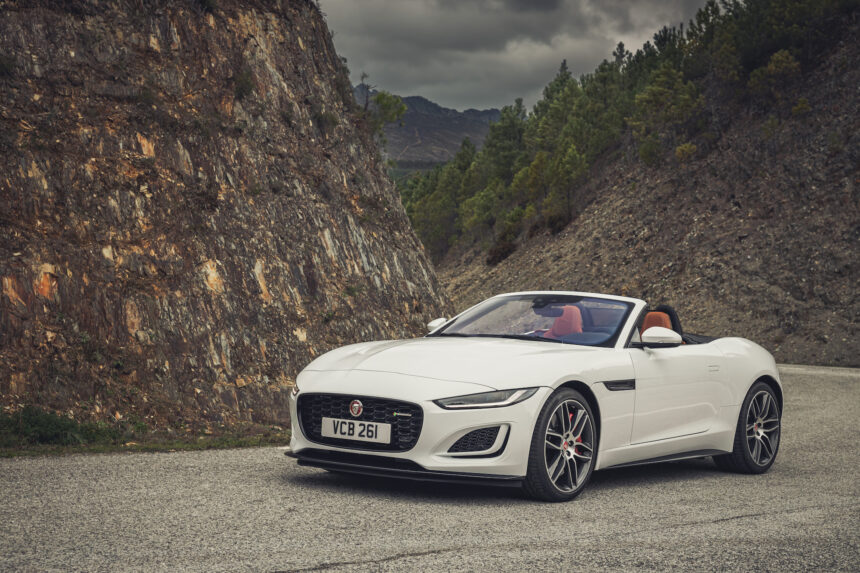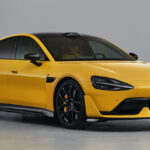The automotive industry is constantly evolving, with new models hitting the market every year. However, with the introduction of new vehicles comes the inevitable retirement of some old favorites. As we look ahead to the 2025 model year, we bid farewell to several beloved cars, trucks, SUVs, and EVs/hybrids that won’t be making a return.
One such vehicle is the Alfa Romeo Stelvio Quadrifoglio Super Sport. Known for its snazzy performance and track-ready capabilities, the Stelvio Quadrifoglio and Giulia Quadrifoglio will be dearly missed. With a powerful 2.9-liter twin-turbocharged V-6 engine producing 505 hp, these cars were always a thrill to drive. However, their overly stiff suspension and zippy steering made them better suited for the racetrack than everyday driving.
Another notable departure is the Audi A5 coupe and convertible. While the A5 will continue to exist in a redesigned form, the coupe and convertible variants will be discontinued. Audi is restructuring its naming system, with even-numbered models designated for EVs and odd-numbered models for ICE vehicles. This transition is expected to be a bit rocky, but Audi is committed to embracing the future of electric mobility.
Cadillac’s smallest crossover SUV, the XT4, will also be saying goodbye in 2025. Despite being refreshed in 2024 with a state-of-the-art 33-inch LED display, the XT4 will be discontinued to make room for the next-generation Chevy Bolt EV. This decision reflects GM’s shift towards electric vehicles and the changing landscape of the automotive industry.
The Chevrolet Camaro, a classic American muscle car, is also on the chopping block. While rumors of an EV successor are swirling, the current Camaro will soon be a thing of the past. Known for its powerful engines and retro styling, the Camaro has a loyal following, but dwindling sales have led to its discontinuation.
Chevrolet’s midsize sedan, the Malibu, will be another casualty of changing consumer preferences. Despite being a reliable and practical choice, the Malibu failed to capture the attention of buyers in a highly competitive segment. As Chevy focuses on its ICE lineup, the Malibu will be phased out in favor of other models.
Infiniti’s Q50 sedan, once a staple in the luxury sports sedan market, will also be discontinued. With the rise of SUVs and electric vehicles, the Q50 has fallen out of favor with consumers. Infiniti is shifting its focus towards SUVs and is rumored to be working on an electric sedan to cater to changing preferences.
Jaguar is undergoing a major transformation, with plans to pivot to an all-electric lineup. As a result, the E-Pace, I-Pace, XE, XF, and F-Type will all be discontinued. Only the F-Pace crossover SUV will remain, as Jaguar looks to embrace the future of electric mobility.
Lastly, the Kia Forte will be reborn as the K4 in 2025. Despite undergoing a revamp, the Forte will now be known by a new name, reflecting Kia’s efforts to rebrand and appeal to a wider audience.
In conclusion, as we bid farewell to these beloved vehicles, we look towards the future of the automotive industry with excitement and anticipation. While change is inevitable, it also brings new opportunities for innovation and progress. As we say goodbye to the past, we embrace the future with open arms. Maserati has had its fair share of ups and downs in the past, but it seems like the Italian luxury carmaker is finally finding its footing. After a brief stint of going downmarket too fast, Maserati has realized that the future lies in producing gorgeous two-door EV convertibles and slick midsize SUVs like the GranTurismo and Grecale.
The decision to focus on these high-end vehicles comes at a time when the automotive industry is shifting towards electric vehicles and luxury SUVs. Maserati’s move to embrace this trend shows that they are committed to staying relevant in a rapidly changing market.
One of the vehicles that won’t be making the cut for Maserati is the Mirage. Last year, the Mirage was on the brink of disappearing, but it managed to make a comeback. However, come 2025, the Mirage will be no more, joining the ranks of other budget-friendly cars like the Chevy Spark and Kia Rio. It will be interesting to see how the used prices for the Mirage hold up as new-car prices continue to soar.
Another vehicle that won’t be making it past this year is the Nissan Titan. Nissan had high hopes for the Titan when it was launched earlier this century, but it failed to make a significant impact in the highly competitive truck market. Despite a few updates and a half-heavy-duty XD edition, the Titan never managed to dethrone the Ford F-150 or the Toyota Tundra. Now, the Titan is officially out of production.
On the other hand, the Toyota Venza, despite deserving more respect, will also be discontinued. The Venza had all the makings of a great vehicle, with ample size, a sleek shape, and great reliability. The latest hybrid-only edition even managed to outshine its competitors with its refined drive and luxurious cabin. However, its size and price ultimately led to its downfall, as it failed to attract enough buyers. In its final model year, the Venza received a commendable TCC Rating of 7.2 out of 10, making it the highest-rated vehicle that won’t be around for much longer.
Overall, Maserati’s decision to focus on producing high-end EV convertibles and luxury SUVs seems to be a step in the right direction. While it’s always sad to see beloved vehicles like the Mirage, Titan, and Venza go, it’s clear that Maserati is determined to stay ahead of the curve and continue delivering top-notch vehicles that cater to the evolving needs of consumers.





